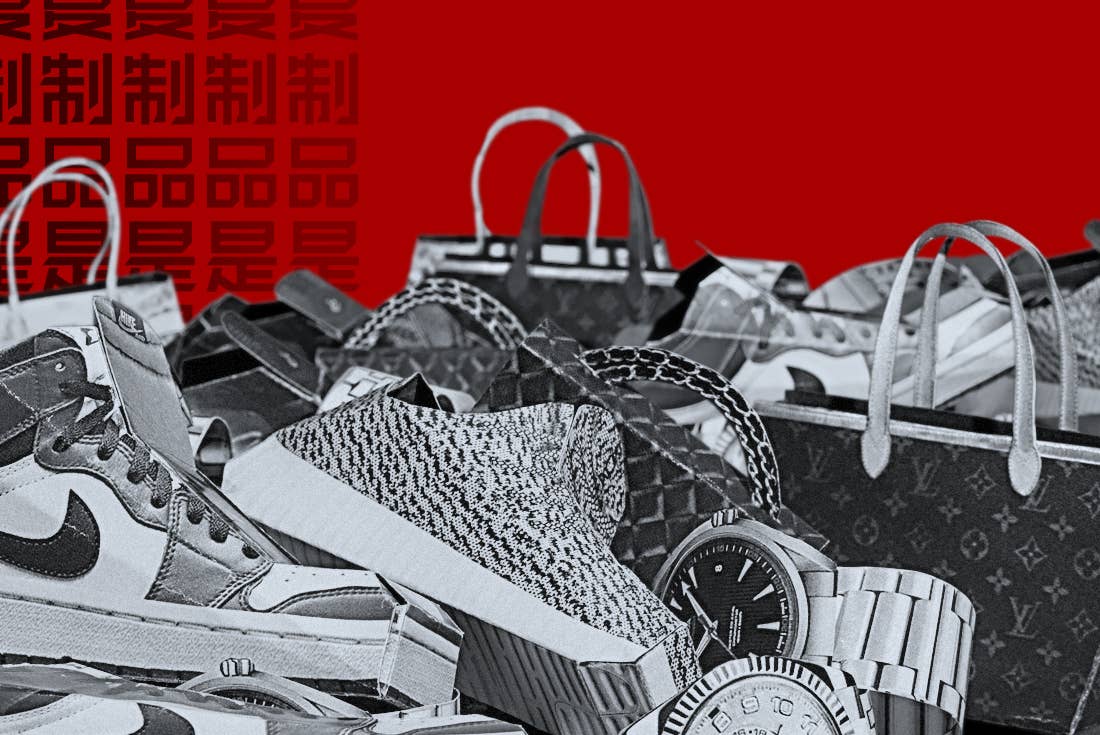
On the morning of January 7, 2015, two masked gunmen—brothers Said and Cherif Kouachi—entered the office of French satirical newspaper Charlie Hebdo on Rue Nicolas-Appert in Paris. They had come to seek vengeance on the Charlie Hebdo staff for publishing cartoons that the brothers believed disparaged Islam and the Prophet Muhammad. By the time their rampage had ended that day, they had killed 12 people, including two police officers and a building maintenance worker, and injured nearly a dozen more. The brothers, it would later be determined, were acting on behalf of Al Qaeda in Yemen. Their weapons cache reportedly included assault rifles, machine guns, pistols, a shotgun, and a grenade launcher. The source of the brothers' rage—the radicalization of ostracized Muslim youth—is one of the most uncontrollable problems in geopolitics today. The source of their arsenal, however, is more straightforward; in fact, if you shopped in Paris in the months leading up to the attacks, you may have even contributed to their weapons purchase.

As Bruce Foucart, director of U.S. Homeland Security’s National Intellectual Property Rights Coordination Center, tells Complex, Cherif Kouachi funded his cache through the sale of counterfeit luxury goods on the streets of Paris.
“That's a direct link,” Foucart says. “The sale of counterfeit goods went into buying these guns.”
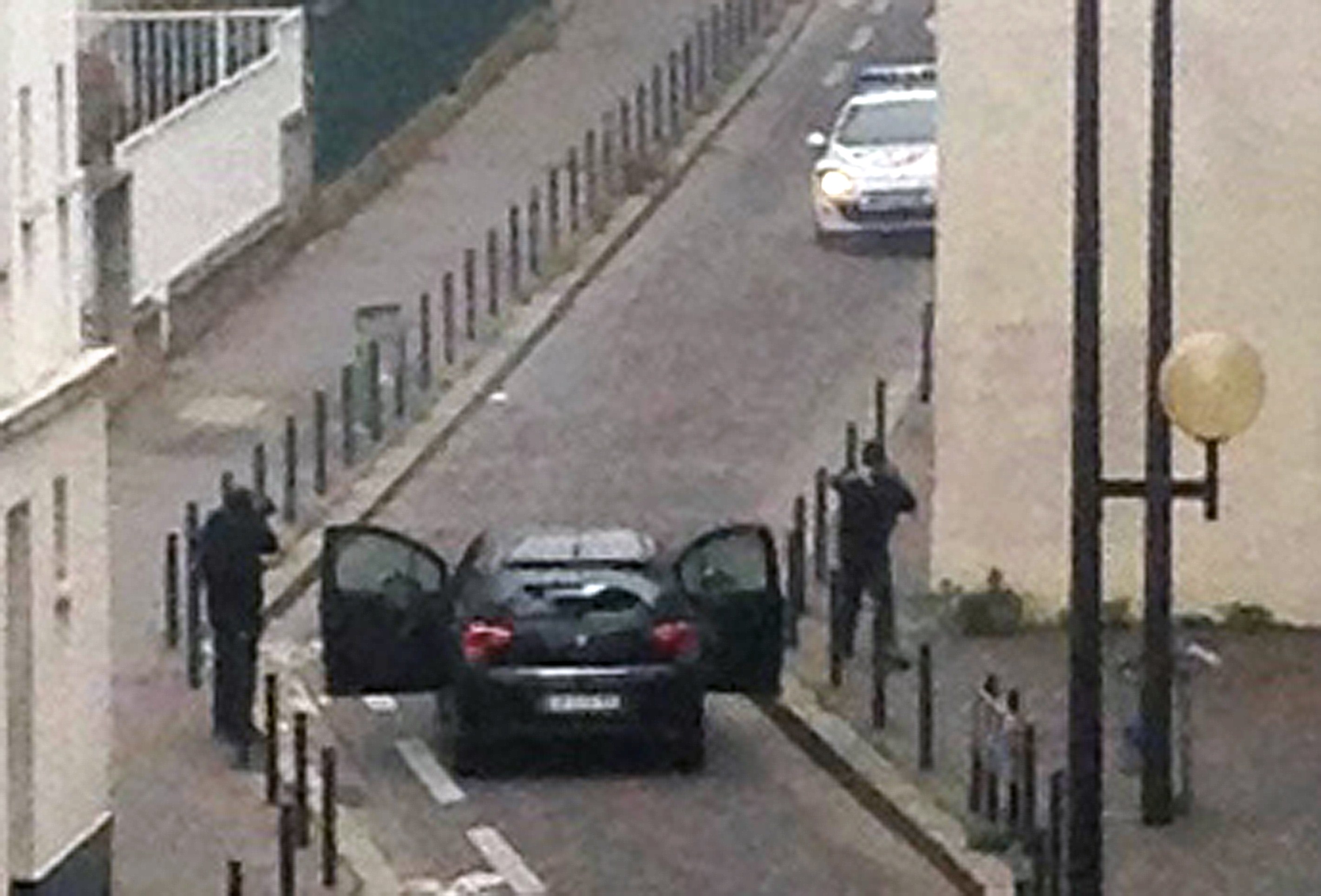
The manufacturing, importing, and selling of counterfeit apparel and accessories—fake designer clothes, sneakers, bags, sunglasses, watches, and other items passed off as the real thing—is a staggeringly complex industry, encompassing a dizzying global network of suppliers, distributors, and sellers. It has proven itself to be a highly adaptable industry, too, making use of emerging online platforms to hawk everything from bootleg Yeezys to fake Rolex watches and bypassing the traditional import-export channels to slide past customs in small packages shipped directly to consumers.
It’s also very lucrative. According to the International Anti-Counterfeiting Coalition (IACC), the total projected value of the global trade in counterfeit goods in 2015 was $1.77 trillion, a number that is roughly equal to the GDP of Brazil.
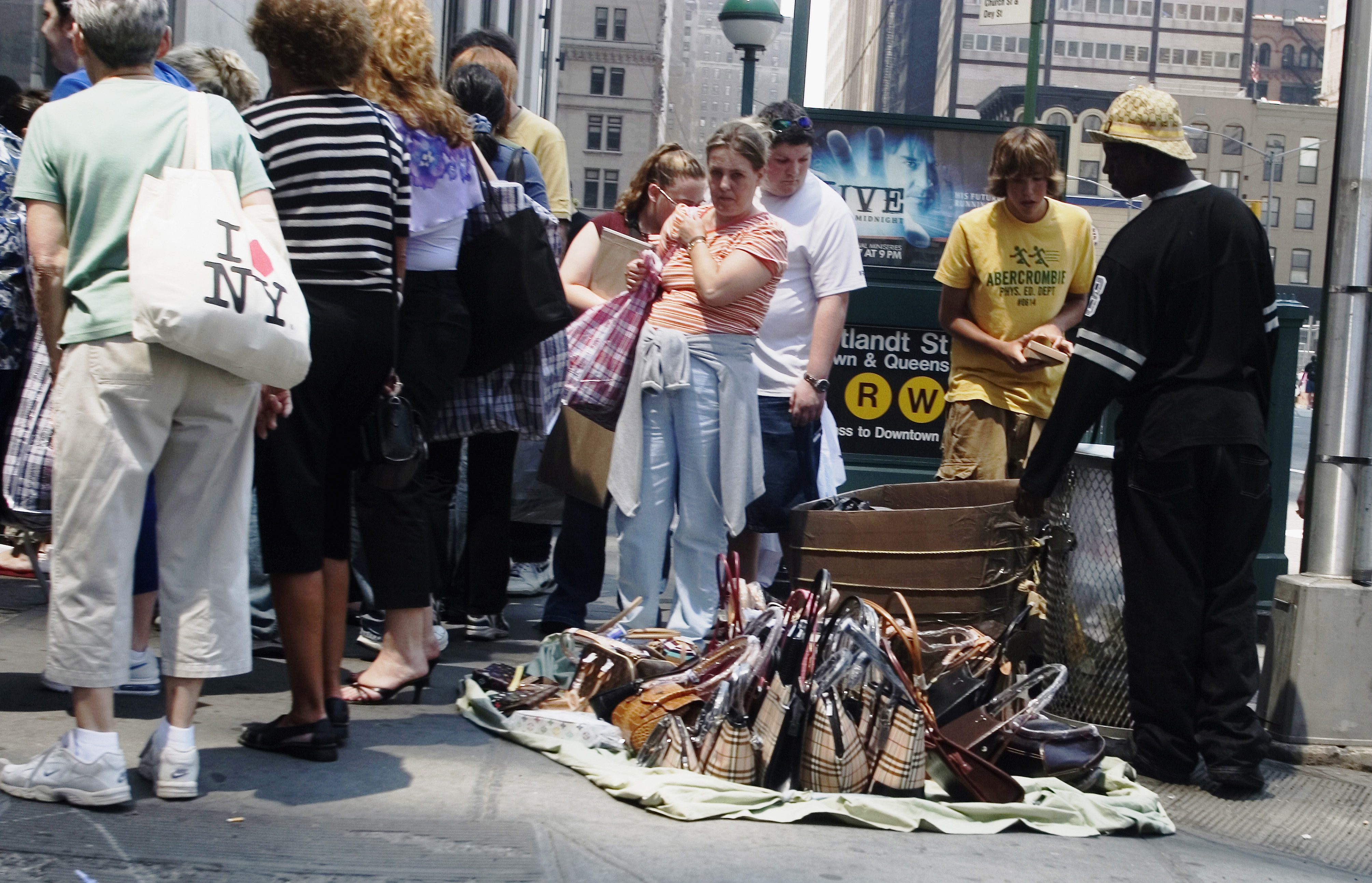
That amount of money, much of it almost impossible for authorities to trace, attracts criminals looking to fund other illegal activities. Examples like the Charlie Hebdo attack, while not unheard of, are unusual, not only because of the extreme, public nature of the attack, but also because of the clarity of the link between the sale of counterfeit goods and the endpoint of the money trail—in this case, guns and a grenade launcher. Often it’s much more difficult to connect those dots, although they are most certainly connected in some way. According to Foucart and other experts interviewed for this story, profits from the sale of fakes have been traced back to sex trafficking, identity theft, gang violence, and the global drug trade. “Criminality begets other criminality,” he says. “Generally, what we see is a lot of these criminal organizations are not only involved with just counterfeiting.”
In some instances, counterfeit goods are produced in factories that rely on child labor and operate under sweatshop conditions in developing countries. “There are a lot of ugly things that go on to make this allegedly beautiful bag,” says Peter Moreno, a retired NYPD captain with 30 years of police experience, including investigating the sale of counterfeits on the New York subway system. “There's all kinds of kidnapping, dirty money.” Despite the relative ease with which shoppers can purchase these fake goods—on Instagram or picked up at a flea market in broad daylight—and the lack of consequence that ease seems to imply, doing so is far from a victimless crime. And it harms many more than just the companies whose profits are affected and whose creative work is ripped off. “The ultimate victim—or I should say, victims—in counterfeiting includes everyone involved,” Foucart says. “Everyone is harmed all along the way.”
Logomania Hits the Black Market
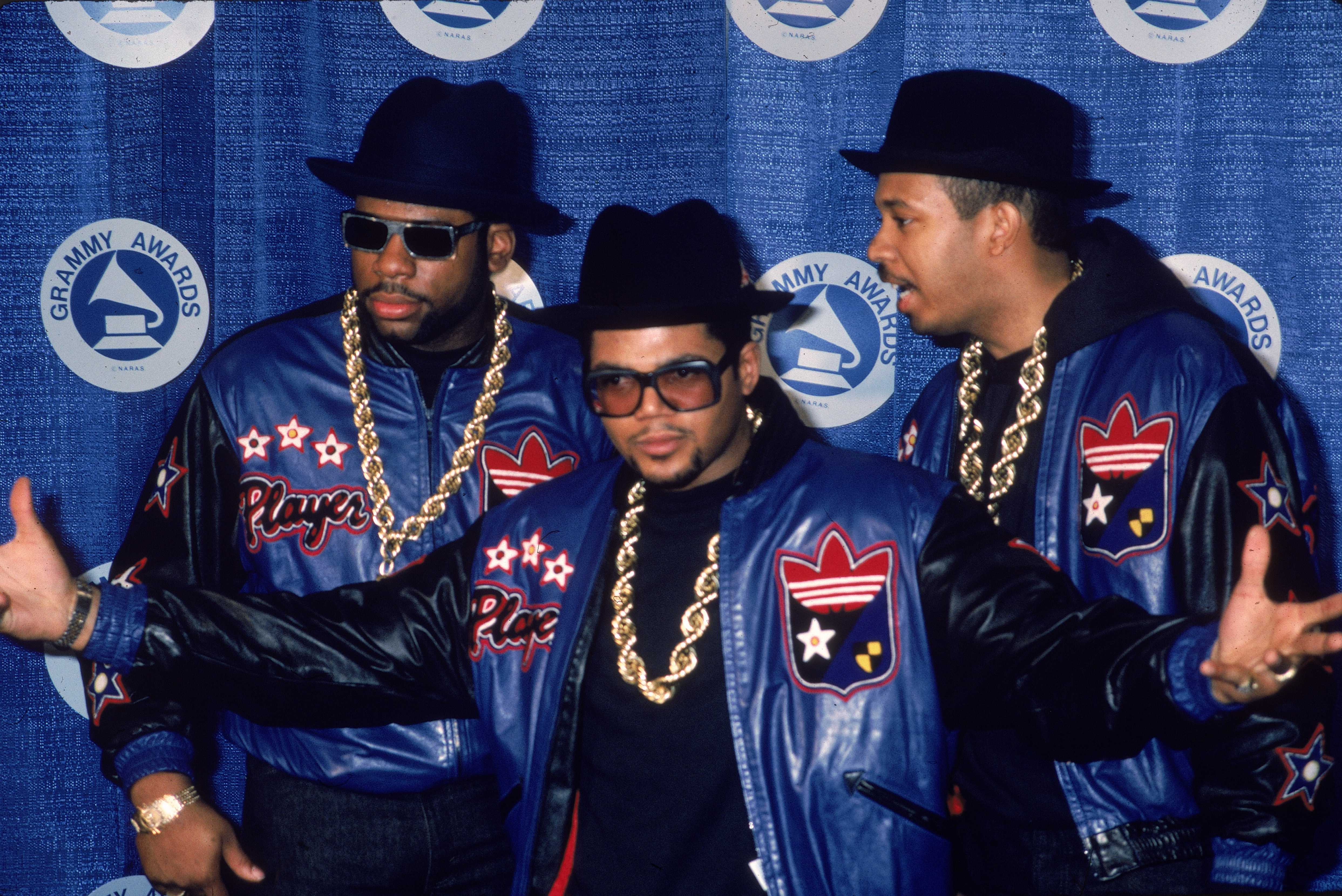
The history of replica fashion wasn’t always so sinister. In the late 1800’s, Parisian couture houses—celebrated for their handmade, custom clothing for the super rich—began to sell licenses to American department stores. “It was literally like a current-day licensing deal, where they would say, ‘This is how many you can produce. This is the quality you should produce,’” explains Ariele Elia, assistant curator at The Museum at The Fashion Institute of Technology in New York. “If you didn’t want to travel all the way to Paris or weren’t able to, you could go to Lord & Taylor and buy a less-expensive version of a Charles Frederick Worth piece.” It was fully legal and above board, but spoke to the general mindset that fuels much of the sale of counterfeit goods today: the desire to have something, particularly a luxury item, that you can’t actually afford or don’t want to purchase at full price.
“People who cannot afford luxury, but want to look as if they can (‘poseurs’) go for big logos,” journalist Brooke Unger explained in 1843 Magazineearlier this year. “Counterfeiters usually copy louder goods.” It’s not only luxury labels that are the targets: Nike and Ray-Ban, brands with universally identifiable logos, are frequently counterfeited globally—Nike tops the list overall, according to the Organisation for Economic Co-operation and Development (OECD). An obsession with logos, Elia says, is what spawned the modern counterfeit industry.
“If you look at the late ‘80s and early ‘90s, and hip-hop culture, you see everybody wearing logo-emblazoned garments, really drawing on the idea of aspirational dress,” she explains. Rappers were draped in Polo and Tommy Hilfiger; Calvin Klein jeans were a status symbol. “That inspired and propelled the idea of counterfeit luxury goods,” Elia says.
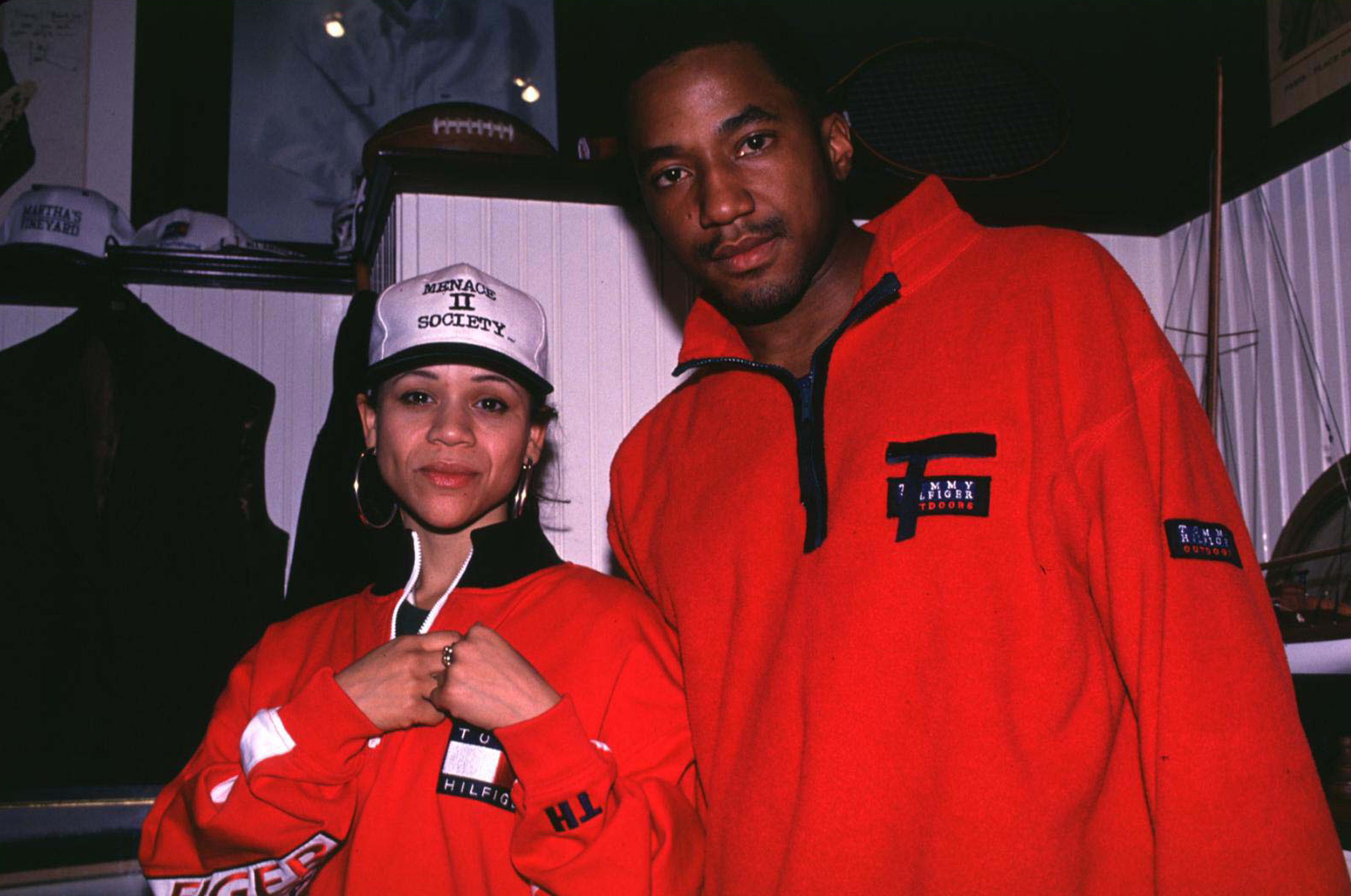
Logos are protected under copyright or trademark law in the U.S, which both fall under the umbrella of intellectual property (IP). Amy Goldsmith, co-chairman of the IP department at the law firm Tarter Krinsky & Drogin in New York, defines IP as “something that people initially create in their minds.” IP law is complicated, but broadly put, if a fake item bears enough similarity to the real thing that it can cause “consumer confusion,” then it isn’t legal. That’s why, when designer Rick Owens released a pair of sneakers with a check mark on the side that looked a little too much like the Nike swoosh, the megabrand sent him a cease and desist.
Since a logo is only one part of a full design, brands can also file to protect a design itself with a copyright or a design patent, if they’re able to prove that it is sufficiently different from anything else that’s come before it. “It has to be something that’s more than just standard shapes or colors,” Goldsmith says. “It has to be unique.” That’s often a tall order for someone who wants to ensure the full legal protection of something like a jacket, for example, which has existed in various forms for centuries. And all of the effort spent getting a U.S. trademark, copyright, or design patent comes with one giant caveat: Much of the fake fashion business has roots many miles from home.
The China Connection
Once you start to pick at the seams of the counterfeit economy, loose threads unravel in many different directions. They lead to places like Italy, where what remains of the Mafia has a huge stake in the counterfeit world, and where a characteristically idiosyncratic copyright system also allows for a healthy market of so-called "legal fakes." New York skate brand Supreme, for example, owns no trademark for their brand in Italy, so an enterprising group of counterfeiters who call themselves Supreme Italia can freely sell tees with the Supreme logo without fear of legal ramifications.
Another emerging hotbed of counterfeiting is South Africa, where local authorities in Durban, particularly wary of the effects fake goods have on the country's homegrown fashion community, shut down a factory producing fake Nike and Guess product in October and seized over $340,000 worth of merchandise.

But the undisputed nexus of worldwide counterfeiting is China. “We think that anywhere between 85 and 95 percent of all counterfeit goods are coming from China,” Foucart says.
The IACC says that $1.08 billion worth of IP-infringing goods that originated in China were seized in 2014; towns like Shenzen and Yimu are often cited as centers of high counterfeit activity. However, China also produces 13.8% of all global exports of legitimate items, according to the UN. China’s massive manufacturing infrastructure gives counterfeiters ample opportunity to ply their trade.
“Those products aren't typically made in people's living rooms,” says James Shore, a partner at San Francisco law firm Sideman & Bancroft who specializes in intellectual property law. “If you're going to make a lot of counterfeit apparel, you have the same kind of manufacturing process as legitimate companies.”
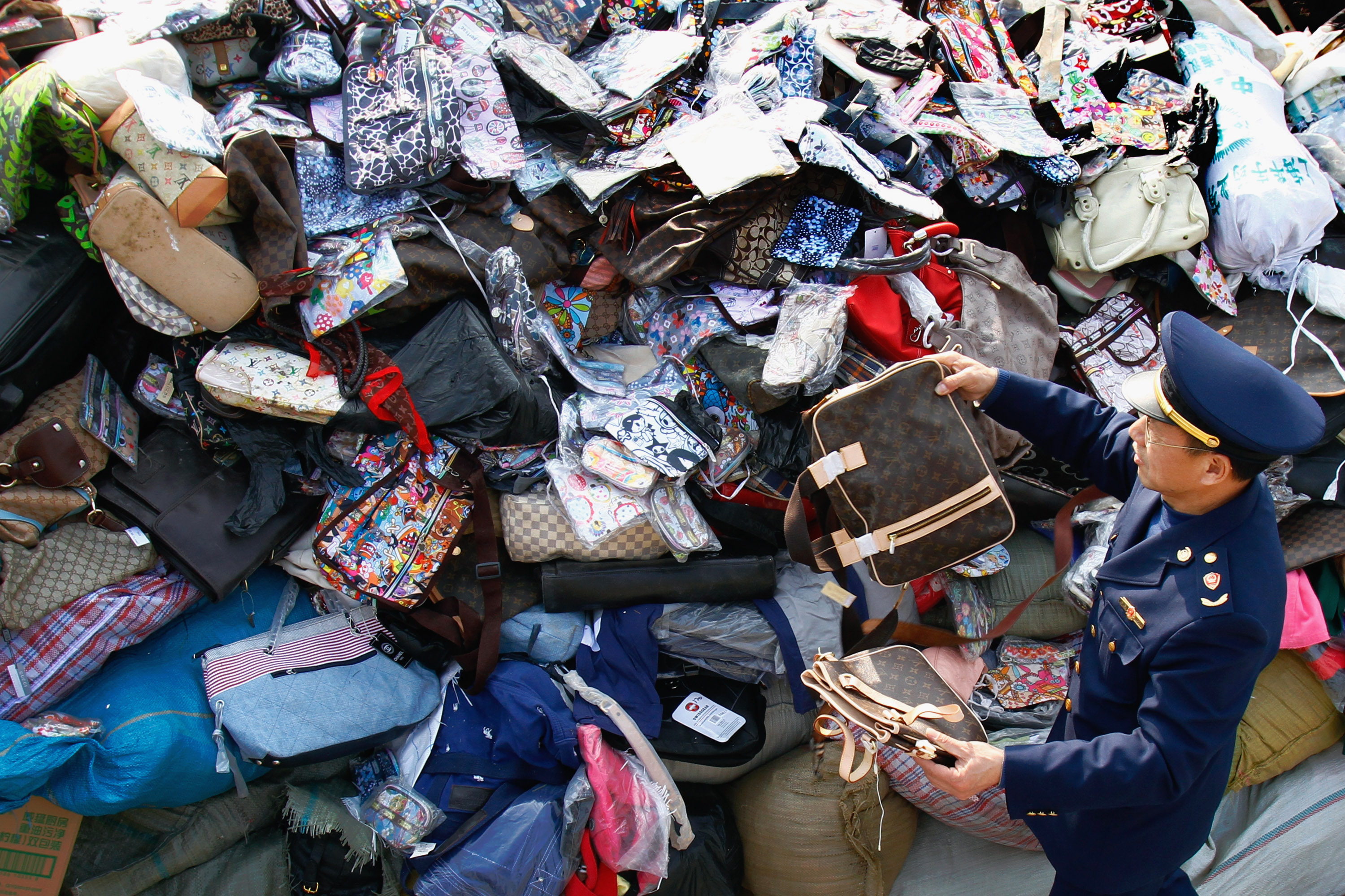
So-called “yuandan goods”—a term for fakes that are produced in the same factories as legitimate designer pieces—complicate prosecuting counterfeiters further, although their very existence has been called into question. Strict security and oversight at factories used by luxury brands cast some doubt as to whether or not factory workers can actually get away with making lower-priced, off-label knockoffs on the premises. Still, high-profile industry figures like Alibaba CEO Jack Ma claim they exist.
Li Qiang, founder and executive director of China Labor Watch, a non-profit workers’ rights advocacy group, agrees. He also notes that some factory owners oversee both legitimate and bootleg operations. “One facility is authorized and certified to produce for a brand,” he says, through a translator. “In another, they make the same product, but are not authorized to do so.” Factory owners don’t pay fees to brand owners when they rip off their designs; using lower quality materials and underpaying employees also ups their profit margins, which incentivizes them to maintain deplorable working conditions.
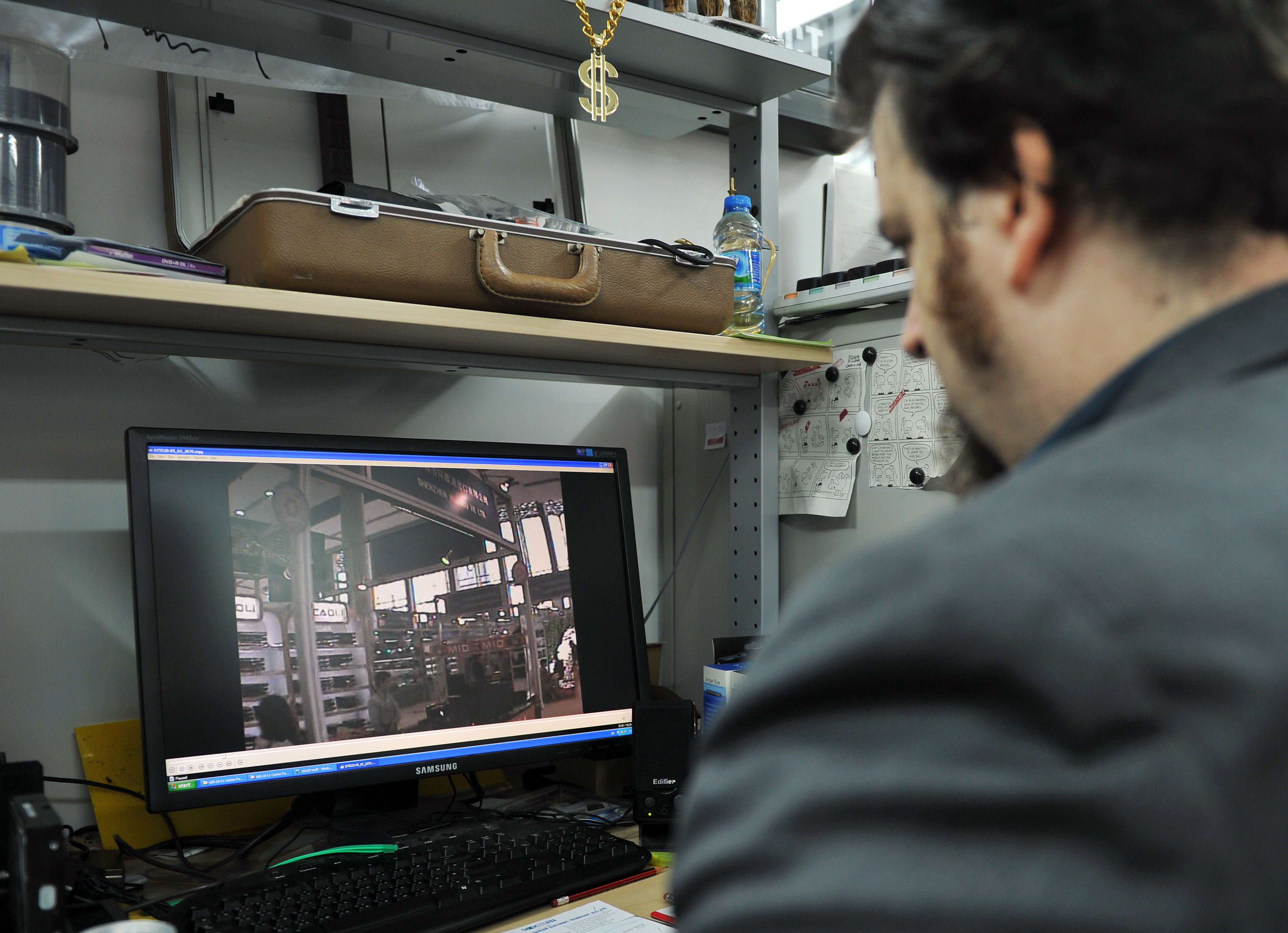
“[Factory employees] may work 12 hours each day and have only one day or two days off each month,” Qiang says. “They live in a small dormitory with 10 roommates, and they may have contact with toxic chemicals during work.” China Labor Watch has also found instances in which owners seize workers’ identification papers, making finding work elsewhere impossible. In her research, Elia found reports of child laborers handcuffed to sewing machines.
Shore says stopping counterfeiters is important to the Chinese government—to an extent. “As China has become more and more a member of the world economy, I think it's become much more of a priority,” he says. “Are they perfect? Absolutely not.” Shore says the pressures involved may go beyond the value of protecting intellectual property. “I'm not trying to justify what they're doing, but these counterfeiters are employing thousands of people in their home countries. So, when a country stops that effort, they're cutting off income. I think a lot of these countries are trying to juggle the legitimate sources of income with the illegitimate.”
Chinese authorities are, however, cracking down on the sale of counterfeit goods in the open, although somewhat sporadically. Han City Fashion & Accessories Plaza was a popular tourist destination in Shanghai and an easy place to find fakes; English-language publication Jing Daily reported that it was raided by police in June 2016. Ten years earlier, counterfeit haven Xiangyang Market was turned into a legitimate luxury mall.
Fakes Go Online
Ultimately, the shutdown of these counterfeit malls may be more of a symbolic victory; counterfeiting, like much of 21st century commerce, primarily lives online. “The internet completely changed everything,” Elia says. “People don't actually buy [a counterfeit item] physically in the store, but they'll probably buy it online and have it shipped to their house.” Foucart notes that this shift has also decreased the number of goods entering the U.S. in big cargo freights that were much easier for customs authorities to catch at the border than individual packages sent through FedEx or the postal service. Manufacturers can also throw authorities off their trail by taking a roundabout shipping route through places like the United Arab Emirates.
Counterfeiters make use of almost every available platform online to get their product to shoppers in the U.S., including encrypted messages on one-to-one services like WhatsApp. “In some ways the brick and mortar buildings were easier, because we knew where they were,” says Goldsmith. “We could locate them. When you're in the online universe it's very difficult, because of privacy protections, to actually locate the true owner.”
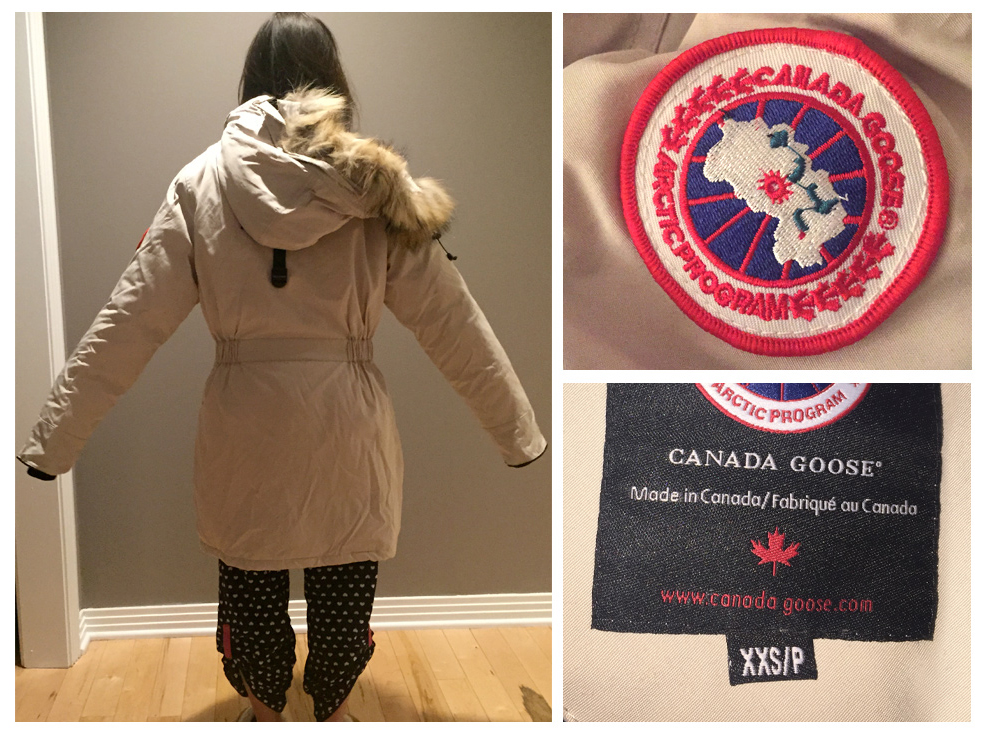
Lauren, 30, a Chicago resident who works in advertising, bought what she thought was an authentic Canada Goose down jacket from an ad she saw on Facebook. “It took me to a website that looked just like the real Canada Goose website,” she says. She purchased a $300 women’s size XS jacket from the site. When it arrived at her apartment, the jacket was shoddily made with a crooked logo patch on the sleeve. It was also a men’s size XL.
Lauren reported the ad to Facebook and tried to get her money back from her bank, a task that was difficult without being able to find the site again. She also didn’t receive a confirmation email. The return address on the shipping label appeared to be a nonsensical translation from Chinese to English, making it nearly impossible to determine where the package originated. Not that it would have made much of a difference. “The addresses are fabricated. The addresses are in the wrong country,” Goldsmith says of similar direct-to-consumer shipments she and her clients have attempted to trace. “The addresses will give you the right town, but the street name doesn’t exist. The company name can be incorrect. It’s a total fraud.”
Perhaps recent attention given to the “fake news” related to the most recent Presidential election will give anyone pause about trusting Facebook links, but even e-commerce sites like eBay, Alibaba and Amazon, all of which have extensive anti-counterfeiting policies, struggle with keeping fakes off of their platforms completely.
The Counterfeit Report is a consumer education and brand advocacy website founded by Craig Crosby. As part of his services provided to companies who solicit his work, Crosby monitors e-commerce sites to identify fake goods and get their listings removed. In the month of July 2016, he says he and his team took down 2.7 million counterfeit items off of eBay, Amazon, and AliExpress. “This is probably a half a dozen manufacturers only,” Crosby says. “This isn't everybody and every counterfeit.”
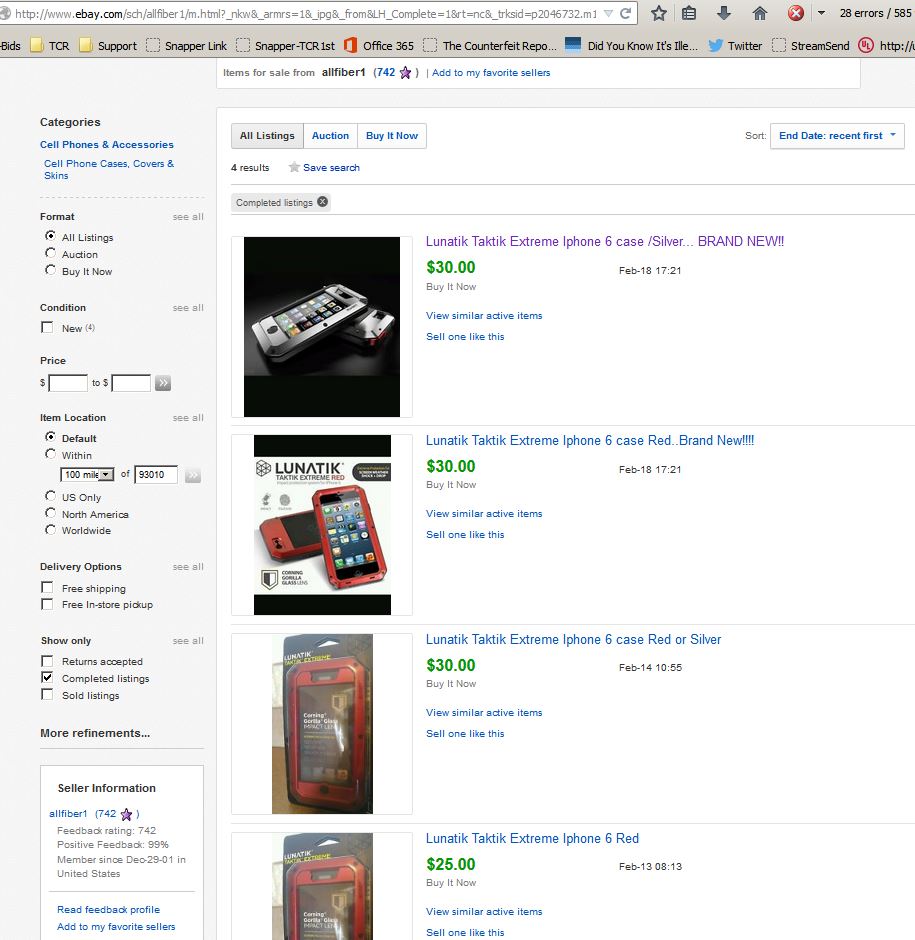
Crosby and his team have thousands of emails and messages archived that track their correspondence with e-commerce sites about removing fake items, some of which he provided to Complex. eBay is of particular interest for Crosby, due in part to the sheer volume of listings that go live every day. An eBay spokesperson confirmed that the site has a dedicated IP team, with employees in Salt Lake City, Austin, Germany, and Singapore whose job description is to prevent counterfeit listings from remaining live and remove counterfeit items that do make it online.
Crosby remains skeptical, to the point where he believes eBay is complicit in keeping fake listings on the site. “eBay makes nine to 10 percent on transaction fees,” he says. “There's no incentive whatsoever to take these products down, even when they're fake.”
Crosby uses his work on behalf of the mobile phone accessory company Lunatik as an example. He says his team purchased fake Lunatik cell phone cases from over 270 sellers on eBay. Lunatik makes only black and white cases; Crosby and his team found listings for bootleg cases simply by setting up an automated email alert with keywords that included Lunatik and “red” or “blue”—the same type of alert any shopper searching for a grail item on eBay can customize directly on the site.
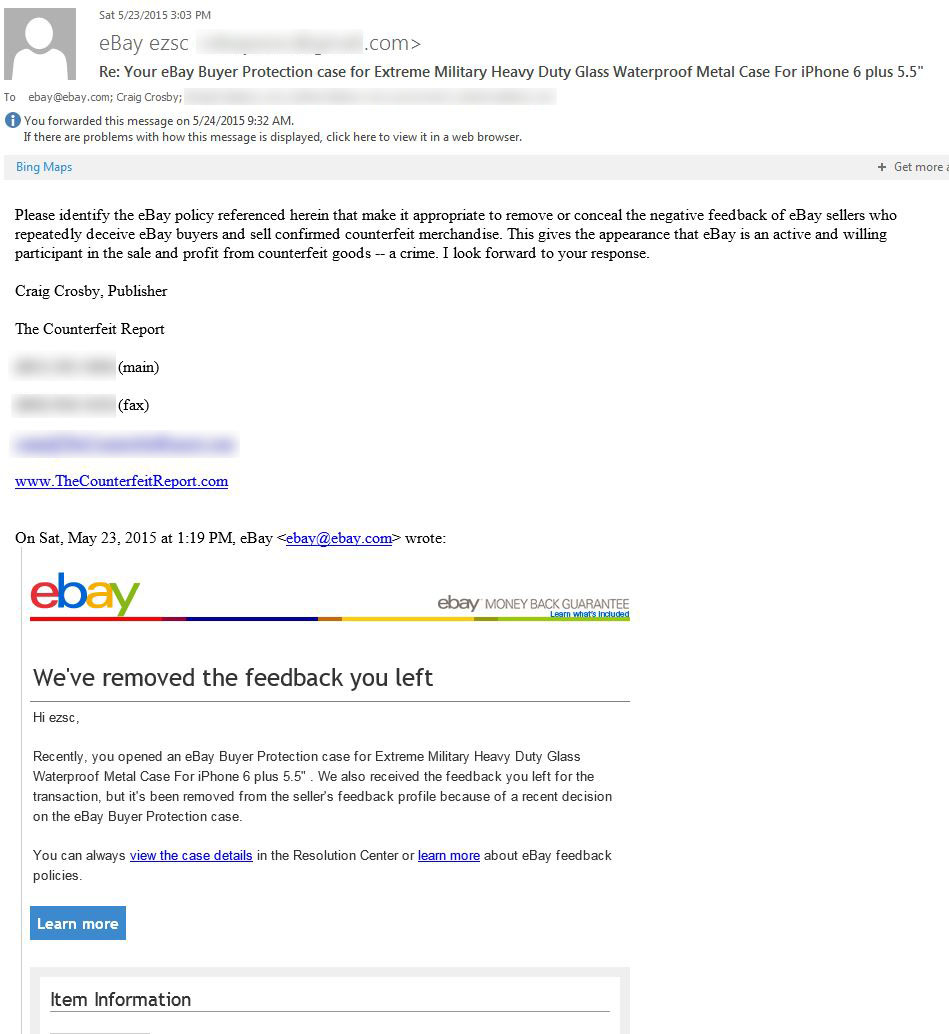
“And when we went to eBay and said, ‘Your software is sophisticated enough to send us emails every day saying brand new, red Lunatik extreme phone cases have just been listed on eBay, but it's not sophisticated enough to tell you it shouldn't even be listed because there is no such product?’” Crosby claims. “And eBay said, ‘Not our problem. If you want to have them removed, you have to send us a notice, a form, a declaration, saying this is a counterfeit product, and we want them removed one by one.’”
eBay says that less than 0.025% of all listings hosted by the site in 2014 were identified as potentially counterfeit. Ryan Moore, an eBay spokesperson, responded to Crosby’s claims with a statement: “Between eBay’s holistic investment in resources to curtail counterfeits and the brand erosion counterfeits cause, eBay has zero interest in allowing counterfeits to be sold on the marketplace,” he says. Amazon did not respond to repeated requests for comment.
Buying Bootleg IRL
Despite the anonymity selling counterfeit products online affords, there are other motivations for counterfeiters to leave storefronts in places where they’ve sold fakes for years, like Canal Street in Lower Manhattan or L.A.’s Santee Alley. Bill Golodner, a former NYPD detective turned private investigator, has spent years combating the sale of counterfeit items. For those sellers who are still hawking fake purses and watches in person, he says the supply chain isn’t that long, going from the manufacturer overseas, to a shipping contact who attempts to get them through customs, before reaching street dealers. As the NYPD and other law enforcement agencies have raided the storefronts where these items are sold, the owners of the buildings have become increasingly liable, facing fines for the illegal activities of their tenants renting out retail spaces.

“Landlords often bear the brunt of significant punishment in these type of counterfeit cases,” Golodner says. “The individuals who are selling the counterfeit goods are often here illegally, they make bail, or they're released usually on their own recognizance, and they disappear. Yet, the landlords have the brick and mortar, and they're stuck there. They have the deep pockets for municipalities to go after and penalize them with large fines, sometimes as much as $20,000.”
Landlords pay big fees for companies like Golodner’s private investigation firm to monitor illegal activity. For them, getting rid of tenants they suspect of selling fakes is less a moral obligation than a financially savvy move that, in turn, has given rise to a network of dealers who operate in city parks and street corners.
As depicted in the documentary accompanying this story, Complex visited Canal Street with a camera hidden in a pair of sunglasses to show how easily counterfeit sunglasses and purses can be found and purchased. It took us mere minutes walking along Canal Street before we were approached by a dealer offering us a number of designer goods, which he said were from luxury brands like Chanel, Coach, and Prada. In years past, he may have led us into a back room or shown us a hidden door under a cash register; in this instance, however, he simply took us on a meandering route through Chinatown to a park on Chrystie Street. There, other shoppers—mostly tourists from out of town—were lined up, sitting on a short brick wall while various dealers came through offering fake Ray-Bans and Louis Vuitton sunglasses from a backpack, faux Hermes

bracelets worn underneath the sleeve of an older woman’s flannel shirt, and an extensive assortment of counterfeit handbags, sold via photos printed on laminated cards. Each dealer communicated with one another, in Chinese and English, via Bluetooth headset. Our shopping trip was cut short when one dealer spotted our hidden camera lens and threatened us with physical violence. But many other shoppers in the park that day went home with armloads of fake goods.
Out of Sight, Out of Mind
As we exited the park, we passed a police car with officers inside who were either oblivious to or uncaring about the illegal activity happening in broad daylight just feet away. A few weeks later, at the height of holiday shopping season, dealers selling fake purses set up shop at all times of day and night along the luxury retail mecca on Fifth Avenue to lure bargain hunters, including one we saw on a Sunday afternoon directly outside of Bergdorf Goodman.
The optics of being so flagrant about selling fake items don’t do much to curtail the public perception that buying a fake is a victimless crime, or one that only affects huge luxury brands’ bottom line. Even with the Charlie Hebdo attacks, the counterfeit connection, while reported by outlets like CNN and The Guardian, was never a main focus of the story, in part because the ensuing manhunt and a related, subsequent shooting in Texas were so sensational.

Reports of other types of crime around the world intertwined with counterfeiting are readily available, though. Per the UN, 49% of IP investigators in the UK said they had worked on counterfeit cases that also involved money laundering. Italian Intelligence says “almost all” of the country’s bootleg industry is run by the Mafia. Another UN report mentions Chinese gangs with ties to Italian counterfeiting experts forcing “smuggled migrants into prostitution and low-wage labor.” Sales of pirated CDs have been linked to funding the 2004 Madrid train bombing, and investigations firm Carratu connects money from counterfeit goods to Hezbollah, Al Qaeda, the Japanese Yakuza, the ETA, and the Russian mob.
In her bookDeluxe: How Luxury Lost Its Luster, Dana Thomas relays the description of a Thai counterfeit factory given to her by an investigator who found seven children under the age of 10 building fake designer handbags. “'The owners had broken the children's legs and tied the lower leg to the thigh so the bones wouldn't mend,’’ she recalls him saying. “‘[They] did it because the children said they wanted to go outside and play.’”
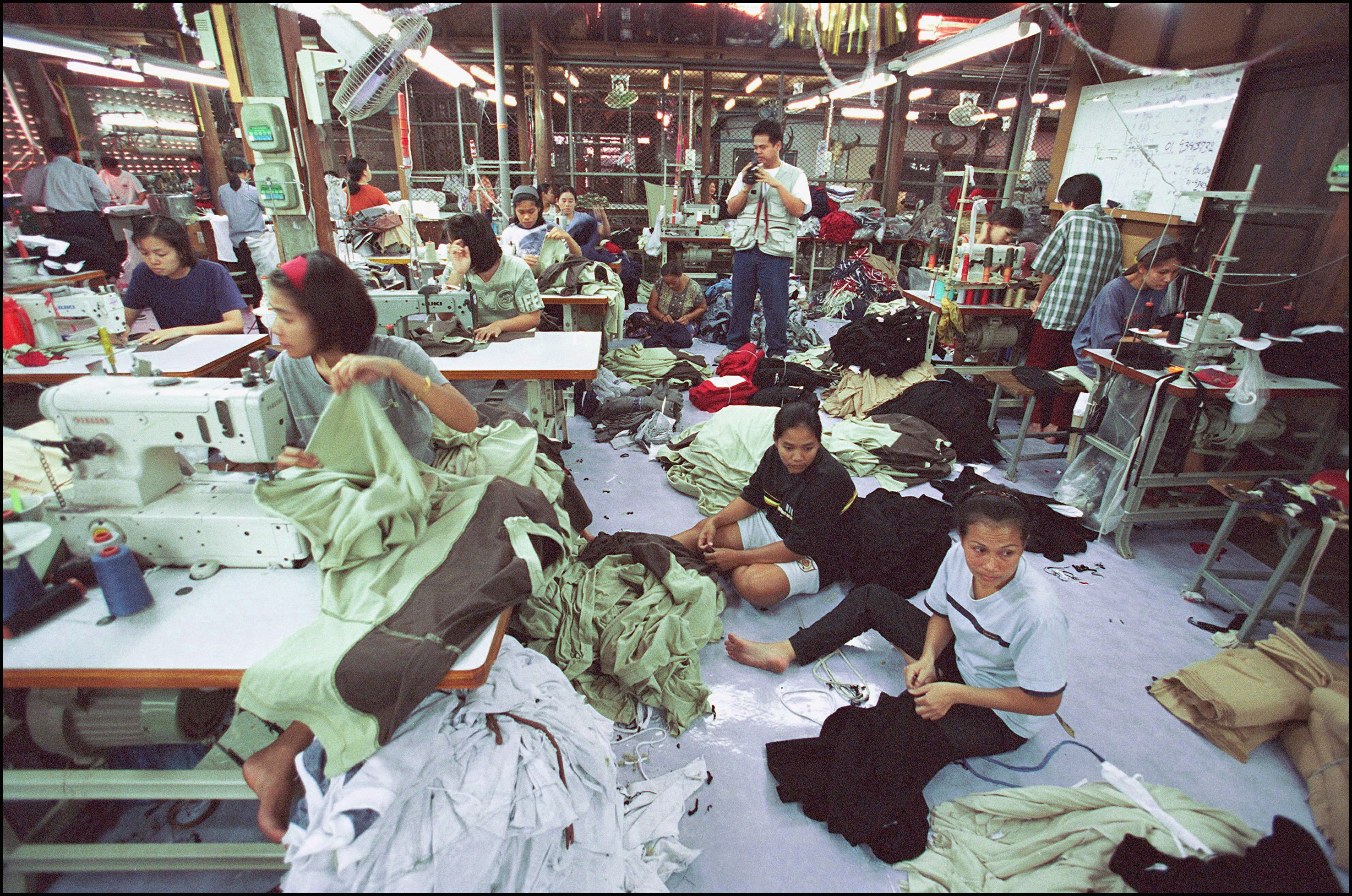
This knowledge is out there. So, why isn’t more being done to shut down these counterfeit rings?
The inconsistent pursuit of counterfeiters typically boils down to money, time, and, perhaps most frustratingly, a lack of emotional resonance. “[Pursuing counterfeiting] is very difficult to bring up to the top of the list of a busy, urban prosecutor,” Moreno says. “They have to deal with homicides. They have to deal with rapes. They have to deal with violence. The violence in this crime is buried. It goes back, often, to another country. For those reasons, it's kind of diluted by the time it gets here. For a local prosecutor, it's not going to be on the top of his or her list.”
Shore compares the challenges to the drug wars. “If you're going to acquire the right target, how much good does it do to take the guy selling 10 dollars of cocaine off the street?” he says. Many of the street level dealers in the U.S. are undocumented or have foreign names that are translated incorrectly in U.S. government documents, making it easy for them to disappear if they are arrested and can make bail. It’s also very difficult to prove that they were culpable in the theft of product design, which is what is covered under IP law. “Ultimately, everybody's holy grail is finding the production facility and shutting it down,” Shore adds. “At the end of the day, the counterfeiters, whether their motivation is terror, human trafficking or organized crime—it's about money. So, if they have made an investment, you can disrupt that by basically destroying that investment, seizing the equipment, seizing the inventory.”
Even with federal support from agencies like Homeland Security’s IPR Center, finding those production facilities takes international cooperation that is inherently time-consuming and expensive. Brands themselves often spend considerable funds to safeguard their designs. A representative for Nike tells Complex that the company actively works with government agencies to combat counterfeiting. Ray-Ban employs a team of specialists internally and works with external agencies to monitor 800 marketplaces globally in real time. A Ray-Ban spokesperson says that in 2015, the company “shut down nearly 30,000 web sites and removed over half a million product advertisements that were deceiving consumers by selling fake products.” They also reported the seizure of six million units of counterfeit product this year to date.
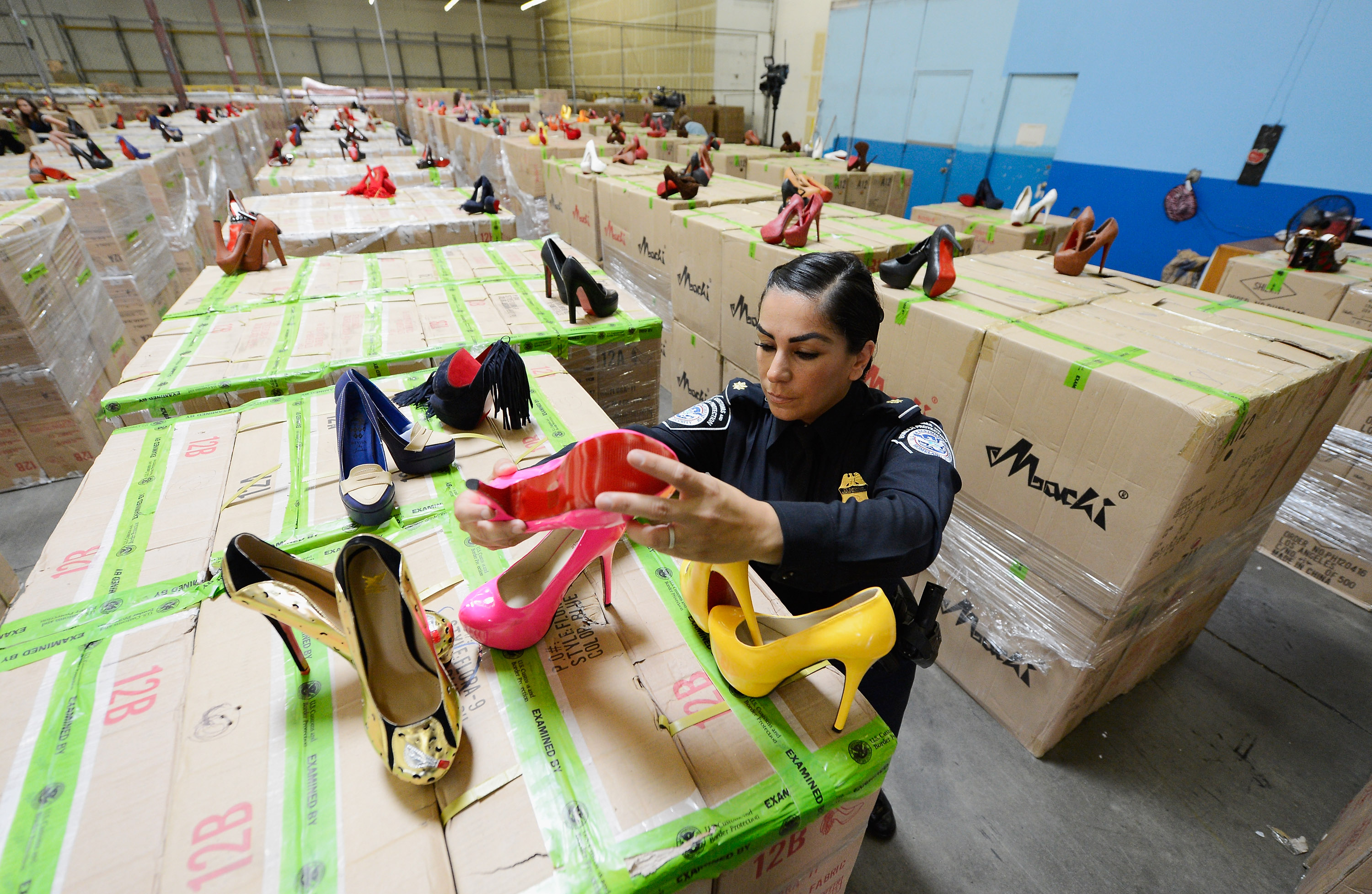
Companies like Nike and Ray-Ban have the funds to pursue aggressive anti-counterfeiting policies. Smaller companies often do not. But no brand is free from the bureaucratic red tape of asking foreign governments for assistance. “You can do [private] investigations and find out exactly where your products are being produced,” Goldsmith explains. “At that point, that information must be verified using the particular practice in the Asian country.”
But each expert we interviewed for this story agrees on one thing: The ultimate responsibility lies with the consumer. “It's the consumer who has access to these products, and law enforcement can only do so much,” Shore says. “Consumers have a choice to make in terms of where they spend their dollars. And I think that there are very few consumers in the United States that want to buy a counterfeit handbag with the idea that it is going to sponsor somebody that's going to blow them up one day.”
Foucart says education and diligence on the part of the shopper has the potential to ultimately be more effective than government efforts. “I like to say we're never going to enforce our way out of this problem,” he notes.
Consumers still tempted by the flash of wearing a designer logo from their arm by any means can consider a question Elia poses: “If you find a fake Louis Vuitton for $26,” she asks, “what is the human cost?”

